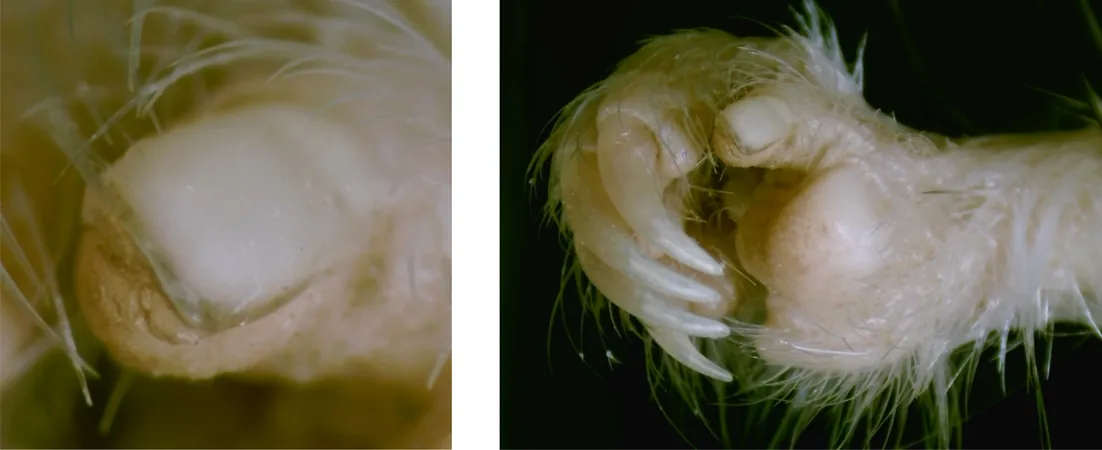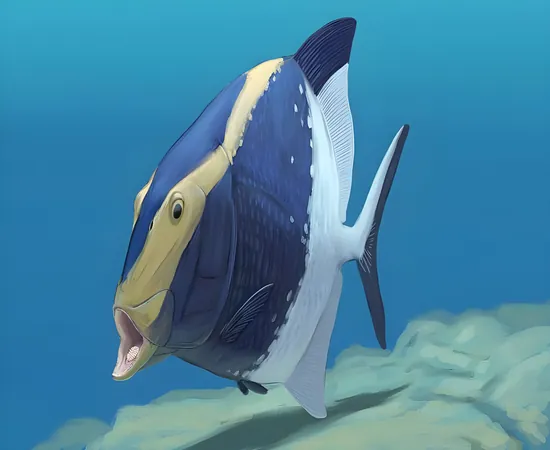
Why Rodents Rule the World: The Fascinating Secret Behind Their Thumbnails!
2025-09-04
Author: Jacques
Imagine a squirrel nibbling on an acorn, deftly gripping it with its front paws. That’s right—squirrels, along with many other rodents, possess thumbs! Unlike the pointed claws found on their other fingers, these thumbs have smooth, flat nails. It’s a quirky adaptation that has intrigued scientists for centuries.
A groundbreaking study published in *Science* has finally shed light on this peculiar characteristic, analyzing hundreds of rodent specimens from museum collections to uncover the evolutionary significance of thumbnails in rodents.
Rafaela Missagia, a research associate at the Field Museum and an assistant professor at the University of São Paulo, remarked, "When I discuss this research, I start by asking, 'Did you know rodents have thumbnails?' It’s surprising to many! Even I didn’t realize it until I got involved in this project."
The Field Museum in Chicago boasts one of the largest mammal collections globally, with rodents making up roughly 40% of all known mammal species. Professor Gordon Shepherd from Northwestern University, intrigued by the differences in rodent thumbs, took advantage of this vast collection to dig deeper into their evolutionary narrative.
The research team meticulously examined the preserved skins of various rodents, searching for thumbs—or the lack thereof. They explored over 530 genera and found that an astonishing 86% contained species with thumbnails. By comparing this data to their feeding habits, they uncovered fascinating patterns.
Using the app iNaturalist and various scholarly resources, Shepherd and his team reconstructed the rodent family tree, associating manual dexterity with dietary preferences. They discovered that species lacking thumbs, like guinea pigs, typically don't use their paws to handle food.
The findings suggest that modern rodents share a common ancestor equipped with thumbnails. This feature likely played a pivotal role in their dominance across the globe.
The researchers propose that those slim, flat thumbnails grant superior manual dexterity compared to sharp claws, resulting in enhanced ability to crack and consume nuts—a high-energy food source. Anderson Feijó, curator of mammals at the Field Museum, noted, "Rodents account for nearly half of all mammal species and thrive on every continent except Antarctica. Their thumbnails may hold the key to their extraordinary success in exploiting unique resources."
Missagia further pointed out that the type of nail or claw leads to insights about an animal’s lifestyle. "For instance, primates, who primarily have nails, tend to live in trees. We confirmed that correlation: rodents with nails are more likely to inhabit arboreal environments, while burrowing rodents with claws dominate below ground."
Interestingly, except for humans, primates are the only mammals featuring nails instead of claws, but they've followed a separate evolutionary path—this phenomenon is known as convergent evolution.
This remarkable study not only unravels the evolutionary success of rodents but also highlights the invaluable role of museum collections in scientific discoveries. As Feijó aptly stated, "Museum collections are a treasure trove of knowledge! I doubt the collectors ever imagined their rodents would one day reveal insights about their thumbnails!"









 Brasil (PT)
Brasil (PT)
 Canada (EN)
Canada (EN)
 Chile (ES)
Chile (ES)
 Česko (CS)
Česko (CS)
 대한민국 (KO)
대한민국 (KO)
 España (ES)
España (ES)
 France (FR)
France (FR)
 Hong Kong (EN)
Hong Kong (EN)
 Italia (IT)
Italia (IT)
 日本 (JA)
日本 (JA)
 Magyarország (HU)
Magyarország (HU)
 Norge (NO)
Norge (NO)
 Polska (PL)
Polska (PL)
 Schweiz (DE)
Schweiz (DE)
 Singapore (EN)
Singapore (EN)
 Sverige (SV)
Sverige (SV)
 Suomi (FI)
Suomi (FI)
 Türkiye (TR)
Türkiye (TR)
 الإمارات العربية المتحدة (AR)
الإمارات العربية المتحدة (AR)